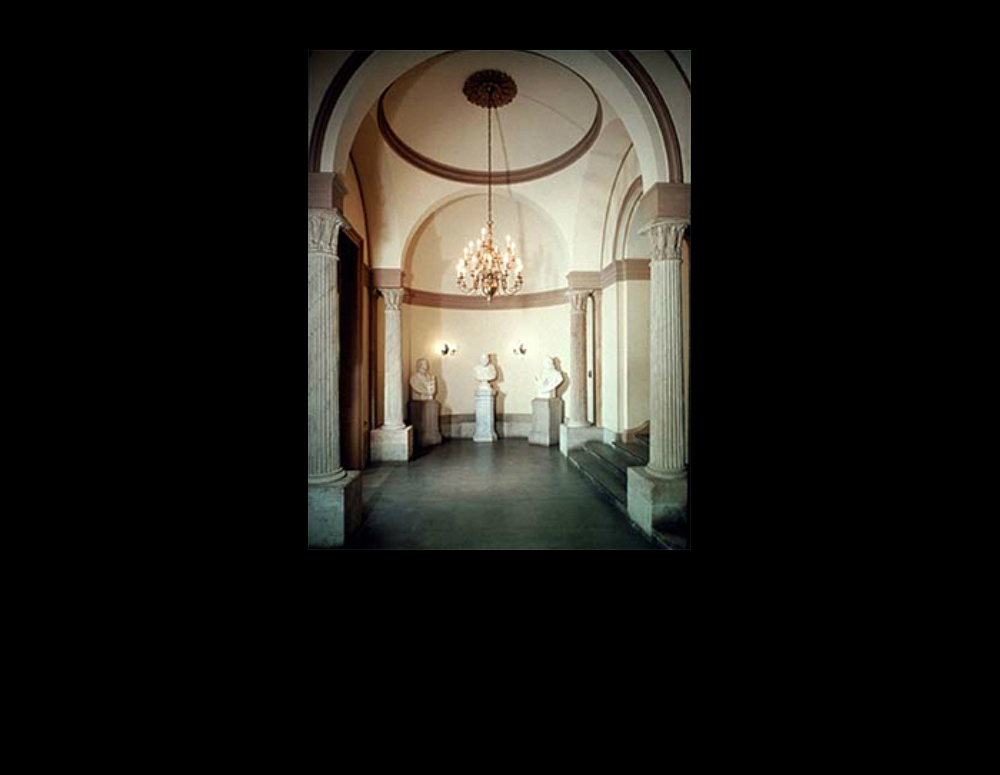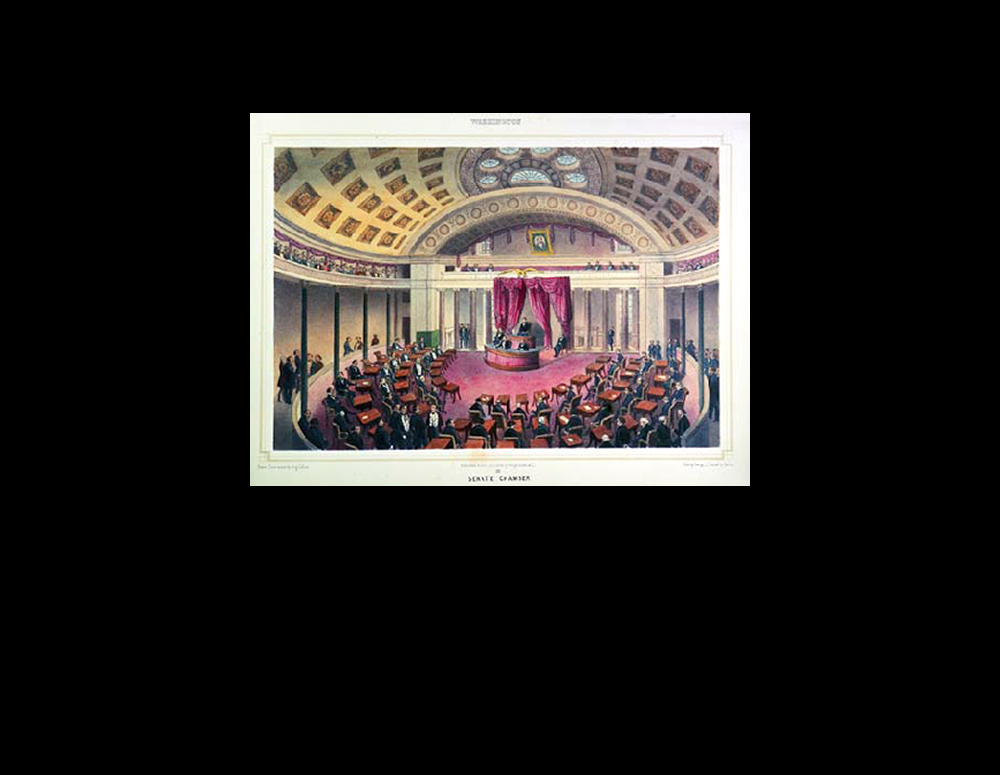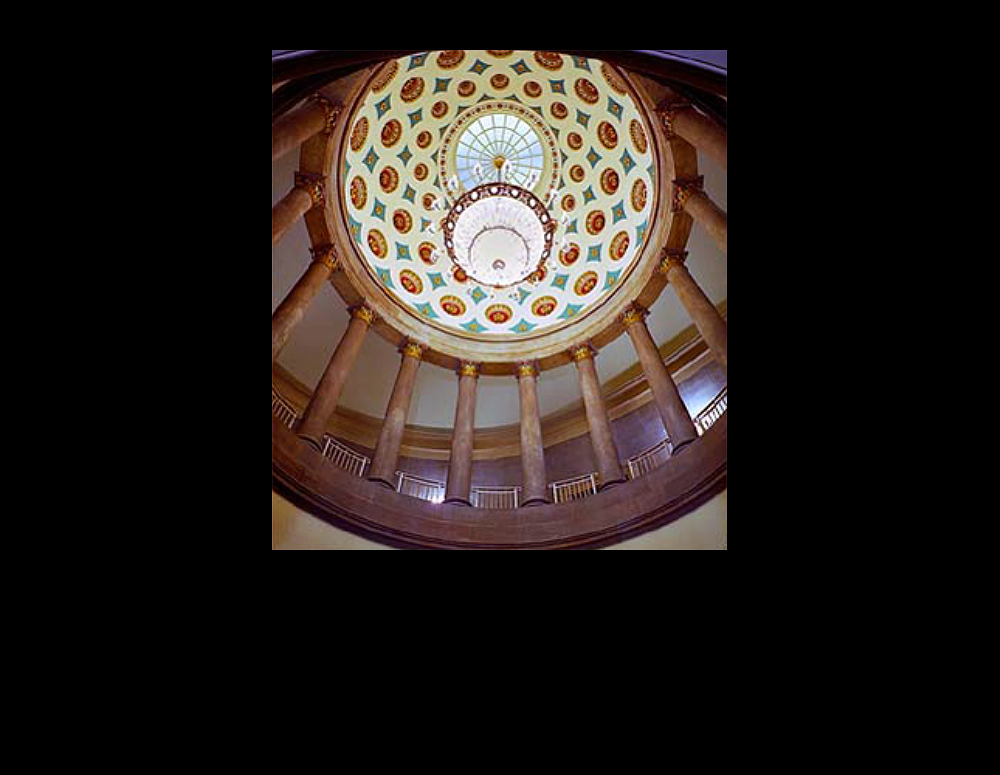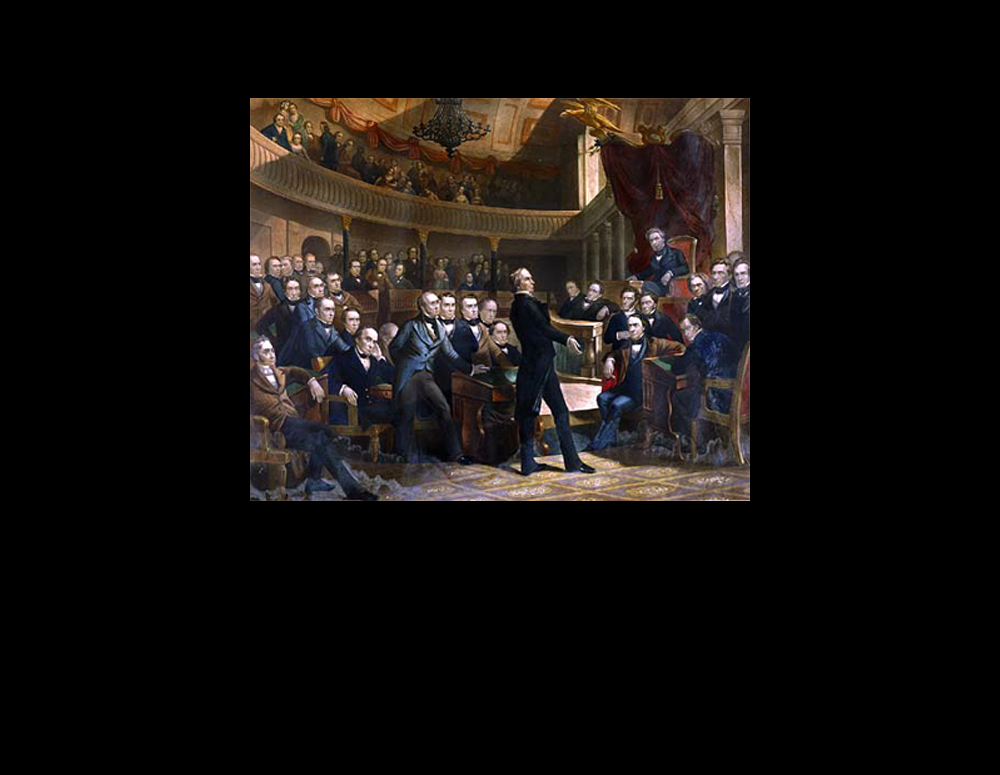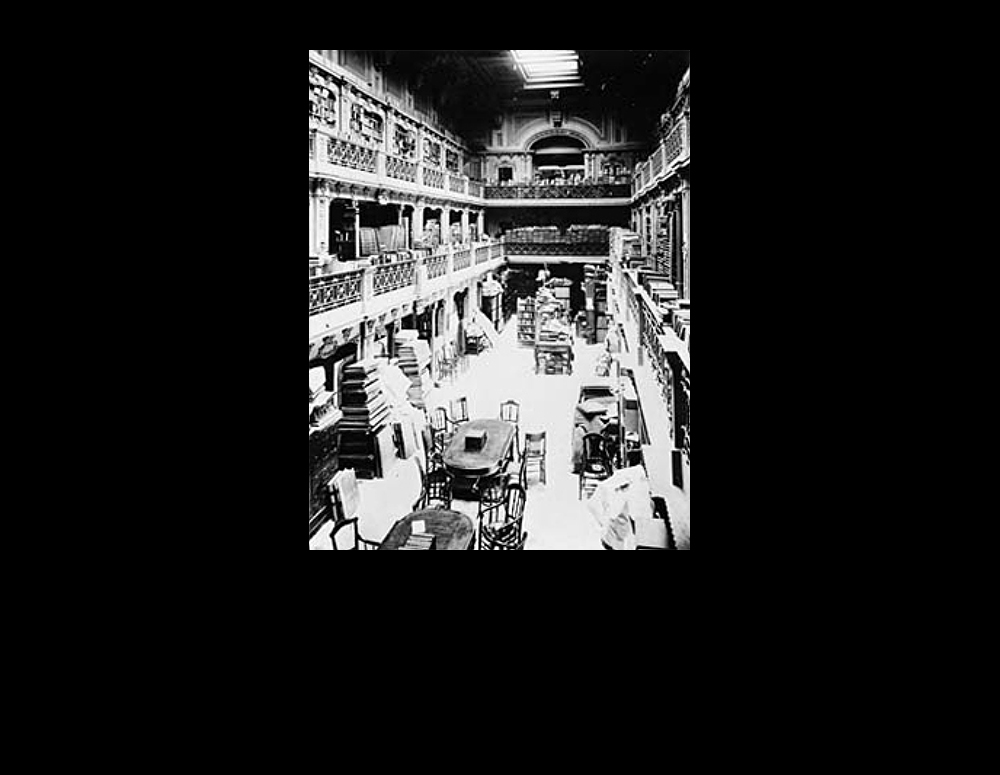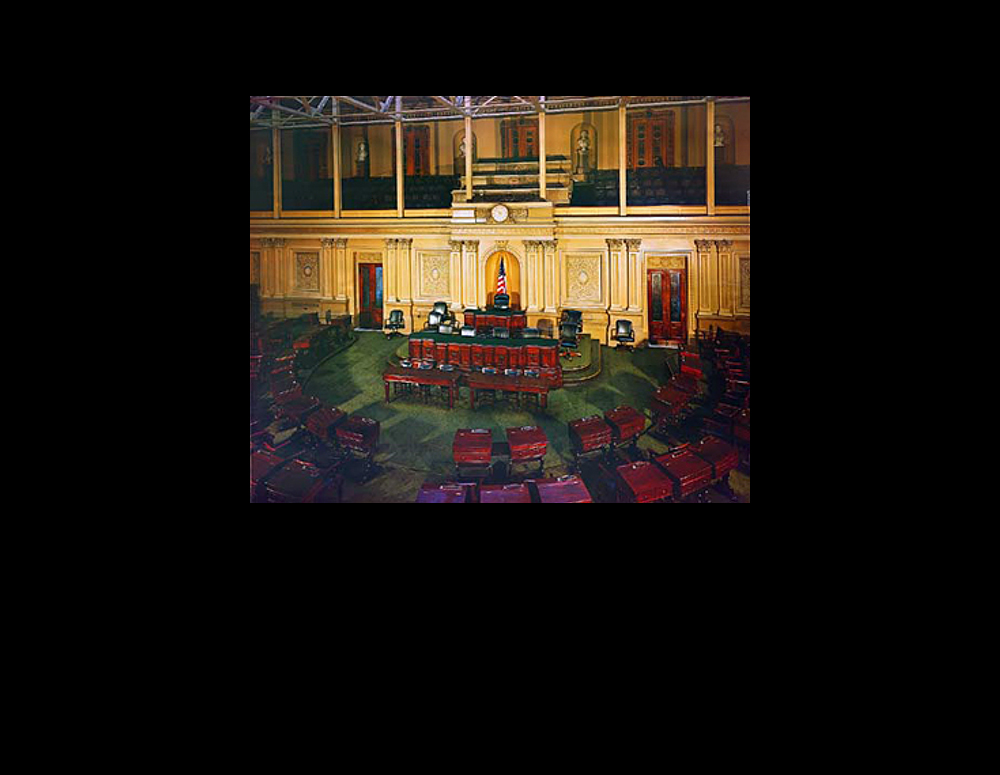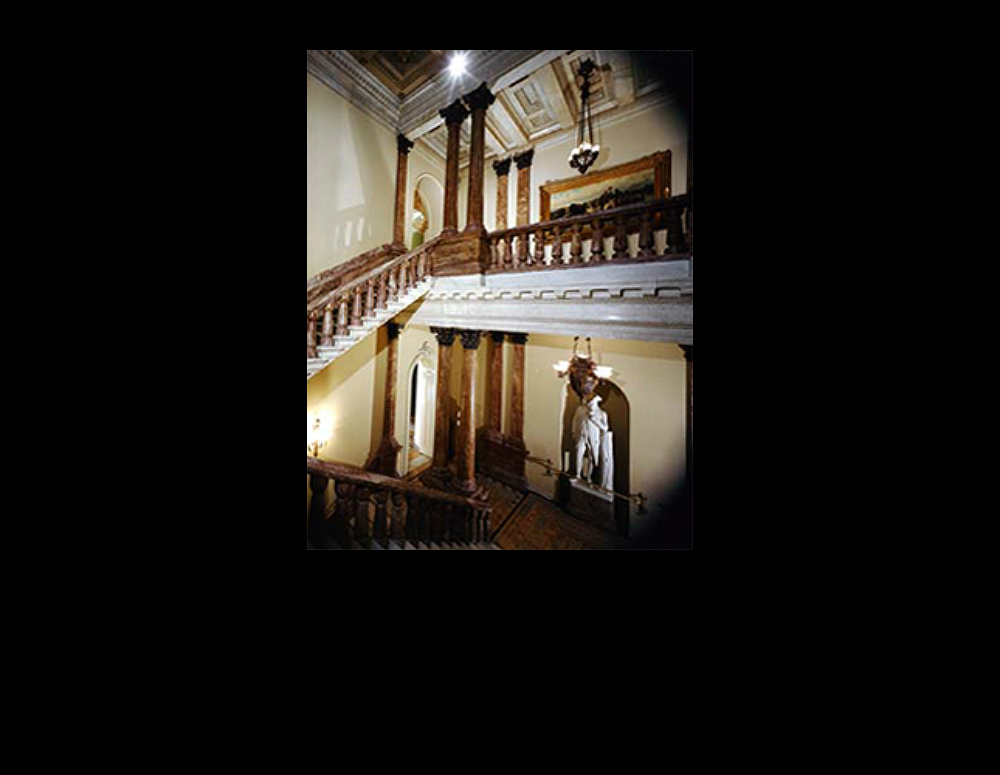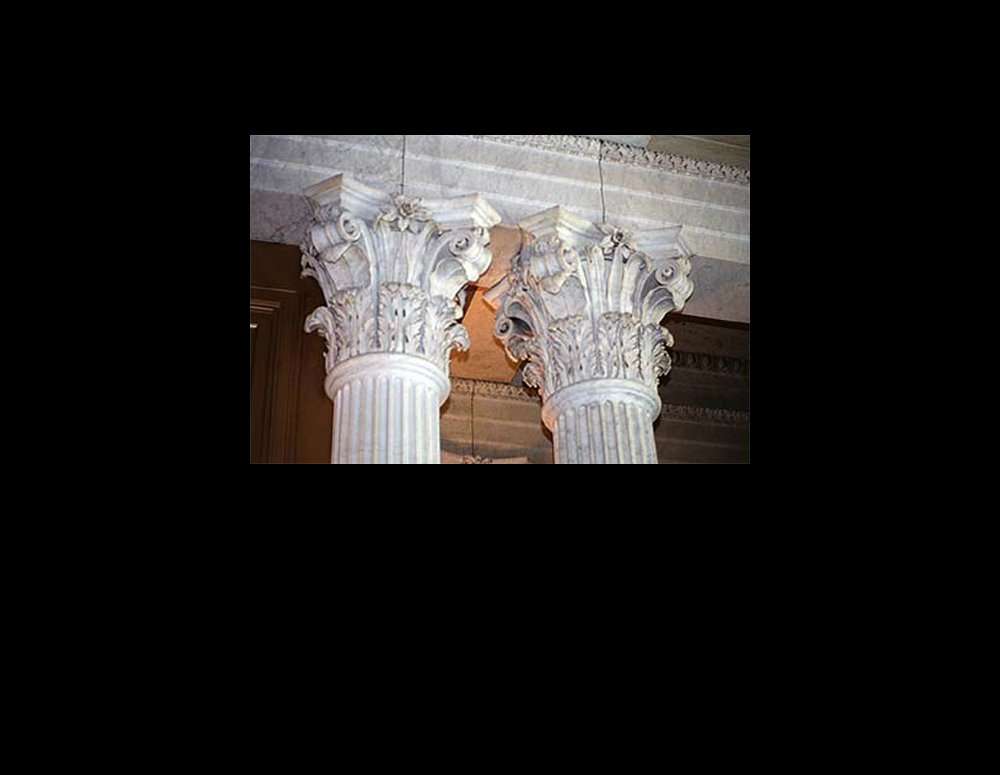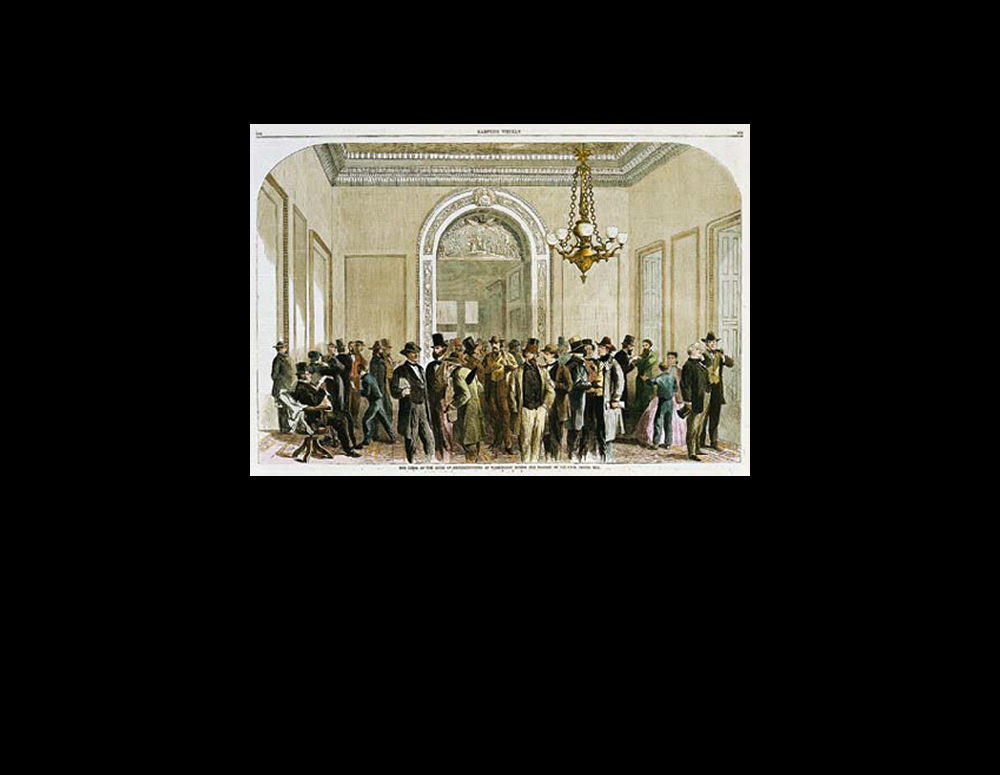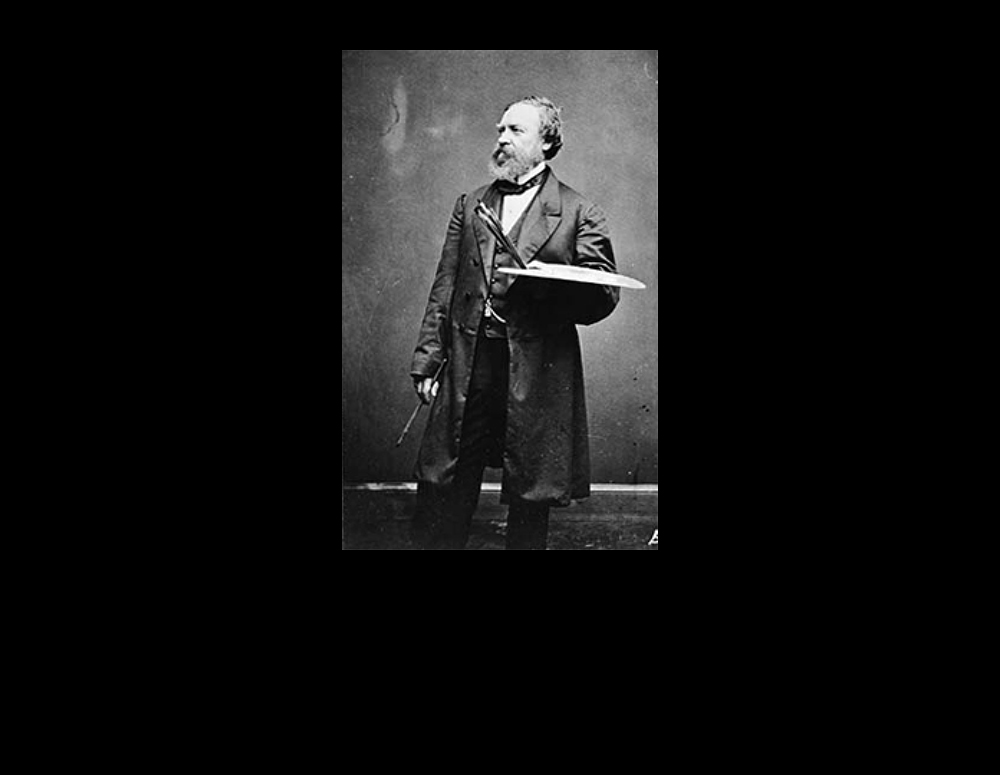The U.S. Senate
James Madison envisioned the Senate, composed of older, more experienced legislators, as “a necessary fence” against the temporary passions that might find expression in the House of Representatives.
Both houses of Congress moved into the north, or Senate, wing in November 1800. The 32 Senators occupied a two-story ground floor room, while the House of Representatives was temporarily located on the second floor. Structural faults led Latrobe to redesign the wing’s interior in 1806 to include a two-story Senate Chamber on the second floor with the Supreme Court Room beneath. This Senate Chamber, damaged beyond repair in the 1814 fire, was redesigned by Latrobe as a third, larger chamber.
Senators, who serve 6-year terms, were originally elected by state legislatures. The 17th Amendment, ratified in 1913, provided for direct election of Senators by popular vote. The Senate’s special powers include the confirmation of high presidential appointments and judgeships, the approval of treaties, and to judge impeachments.
I. THE OLD SUPREME COURT CHAMBER: Although the Supreme Court is a separate branch of government, it was located in the Capitol from 1810-1935. In 1806 Latrobe divided the original two-story Senate Chamber, placing the Supreme Court on the ground floor and the Senate above it. In 1860 the Court moved upstairs to the former Senate and the original courtroom became the Law Library. A separate building for the court was completed in 1935.
II. LATROBE’S OLD SENATE CHAMBER: Latrobe used a screen of columns to divide the Senate Chamber into a public auditorium room and a more intimate area. He probably chose Greek Ionic columns based on a temple in Athens to depict the democratic nature of American government. He lit the semicircular room from above with light from a cupola on the roof filtering through several skylights set into the inner dome. When the visitor’s gallery above the retiring area became inadequate, Bulfinch added a cast-iron balcony around the main room.
III. NEW SENATE CHAMBER: In 1859 the Senate held its first session in the new north wing, the fourth chamber assigned for its use. Aware that several new states would add to the numbers of Senators, Walter and Meigs planned the two-story rectangular room to anticipate future expansion and to provide visitors with ample public galleries overlooking its proceedings. In 1853 Meigs measured several American theaters and churches known for their excellent acoustics seeking the correct proportions for the new chambers.
The Senate’s Victorian decorative scheme in red, white, and blue was more subdued than that of the House Chamber, but it too was modernized twice during the 20th century. The Senate’s present sober and dignified appearance was created by Architect of the Capitol David Lynn in 1949-50.
IV. BRUMIDI CORRIDORS AND ROOMS: During his 34-year career as the Capitol’s major painter, Constantino Brumidi decorated the Senate wing’s committee rooms, offices, and corridors. Working in a revival of Italian Renaissance techniques and styles, he incorporated American flora and fauna with history paintings to tell more than three centuries of the nation’s progress. His experience restoring Renaissance frescoes at the Vatican prepared him technically and intellectually for his work at the Capitol.
NEXT: Here, Sir, the People Govern

